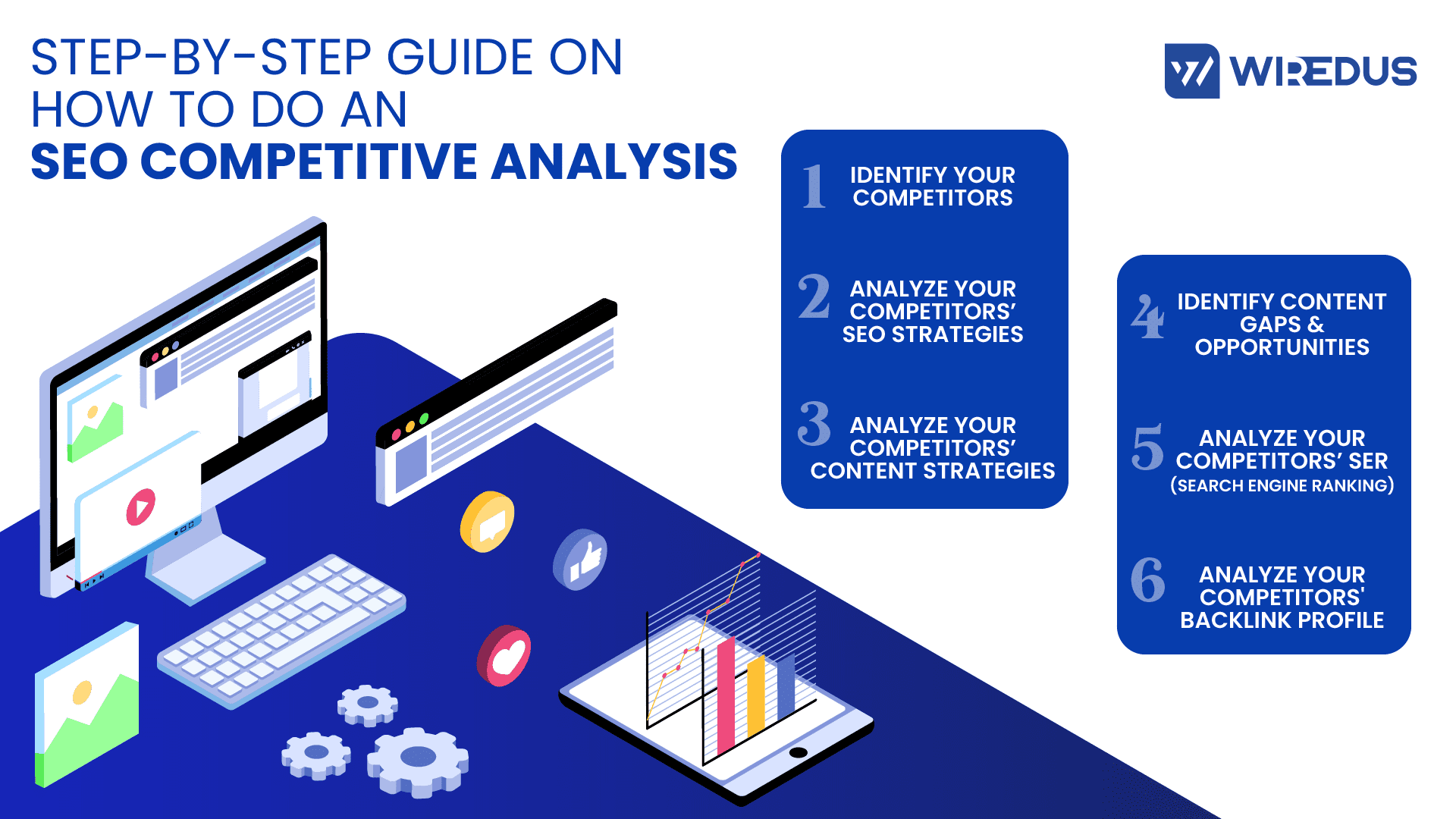In today’s fast-paced digital world, having a strong online presence is essential for any business that wants to succeed. And a strong digital presence can easily be monitored using effective SEO analysis & SEO rank monitoring of your brand. SEO is not only an effective tool for measuring a brand’s digital strength but is also a crucial part of effective digital marketing services.
Monitoring & improving your SEO rank can significantly improve your website’s online visibility and global search engine rankings. However, achieving high search engine rankings can be challenging, especially with so many competitors vying for the top spots. This is where SEO competitor analysis comes in. By analyzing your competitors’ strategies and identifying areas where you can improve, you can develop a winning SEO strategy that will help you achieve your digital marketing goals more efficiently.
So, what is SEO competitor analysis, and why is it important?
In simple terms, SEO competitor analysis is the process of identifying your competitors’ SEO strategies and analyzing them to gain insights into what is working and what isn’t.
Conducting an SEO competitor analysis can help you identify your competitors, their SEO strategies, and how you can improve your website’s ranking by targeting specific keywords, content gaps, and backlink profiles thereby gaining a competitive advantage. This, in turn, can help you formulate an SEO strategy that will help you rank higher and drive more traffic to your website.
Now, let’s look at a step-by-step guide on how to do an SEO competitive analysis and rank higher in search results:

Identify your competitors
The first step in conducting an SEO competitor analysis is to identify your competitors.Your competitors are businesses or websites that rank for the same target keywords or offer similar products or services. You can start by doing a search on Google for your target keywords and analyzing the top search results. This will give you a good idea of who your main competitors are.
Another way to identify your competitors is to use an SEO tool such as Ahrefs, SEMrush, or Moz. These tools will show you who is ranking for your target keywords, as well as give you insights into their backlink profile, organic traffic, and other important metrics.
Analyze your competitors’ SEO strategies

Once you have identified your competitors, the next step is to analyze their SEO strategies. This involves looking at their website structure, content, backlink profile, organic traffic, pages that rank, landing pages and other factors that can affect their search engine rankings.
Some of the key things to look for include the types of content they are creating, the keywords they are targeting, the quality and quantity of their backlinks, and the overall user experience of their website. You can use SEO tools like SEMrush or Ahrefs to review their website and analyze their content quality.
By analyzing their backlink profile, you can identify high-quality links that you can try to replicate. You can also analyze their landing pages to understand their content strategy and identify content gaps that you can fill on your website to improve your online presence and ranking across search engines.
Analyze your competitors’ content strategies
Content is an integral part of any SEO strategy, and analyzing your competitors’ content strategy can help you identify content gaps and opportunities to rank higher. You can use an SEO tool like SEMrush or Ahrefs to analyze your competitors’ top-performing pages and the keywords they rank for. You can also analyze their blog posts to identify the topics they cover and the search queries they target.
Identify content gaps & opportunities

After analyzing your competitors’ SEO & content strategies, the next step is to identify existing content gaps and the opportunities these gaps present. This involves looking for areas where your competitors are weak and where you can capitalize on their weaknesses.
For example, if your competitors are not targeting a specific keyword or topic, you can create content around that topic and target that keyword. This will help you rank higher and drive more traffic to your website.
Analyze your competitors’ SER (Search Engine Ranking)
One of the most important aspects of an SEO competitive analysis is analyzing your competitors’ search engine rankings. You can use an SEO tool like SEMrush or Ahrefs to analyze your competitors’ search engine rankings for specific keywords. This will help you identify the keywords that your competitors rank for and the top-ranking pages for those keywords.
Analyze Your Competitors’ Backlink Profile
Backlinks are a crucial ranking factor in search engine algorithms, and analyzing your competitors’ backlink profile can help you identify high-quality links that you can replicate. You can use an SEO tool like SEMrush or Ahrefs to analyze your competitors’ backlink profile and identify the websites that link to their website. You can also analyze the anchor text of the backlinks to understand the keywords that your competitors are targeting.
Conclusion
The whole point of doing an in-depth SEO analysis of your competitors is to improve your own. After conducting a thorough SEO competitive analysis, you should have a clear understanding of your competitors’ SEO strategies and the opportunities to rank higher in search results.
Use this information to develop your SEO strategy by creating high-quality content that targets specific keywords, building a strong backlink profile, and optimizing your website for search engines. You can use the insights you gained from your SEO competitor analysis to inform your strategy and make sure that you are focusing on the areas that will have the greatest impact on your search engine rankings.
However, simply developing and executing an effective SEO strategy isn’t enough to maintain your brand’s online visibility. But rather, you also need to continuously monitor your progress and adjust your SEO strategies as needed. This involves tracking your website rankings, organic traffic, and other important metrics, and making changes to your strategy based on what is working and what isn’t.
And for brands that may lack the expertise to do it all on their own, employing digital marketing professionals or a data-driven digital marketing agency to provide robust digital marketing solutions can do the trick! With the right SEO strategy and a commitment to ongoing optimization, you can easily achieve top rankings and dominate your competitive landscape.

